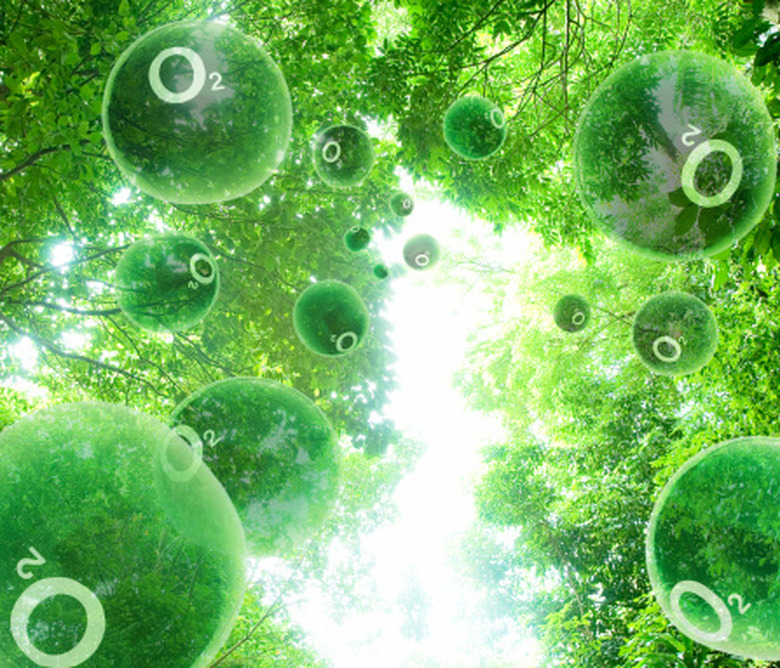What Do Plants Release Into The Air?
Plants respire through microscopic pores in the underside of their leaves; these pores are called stomata. Plants can open or close their stomata to regulate the amount of gas exchange that takes place.
Types
Types
There are three kinds of gases that plants release through their stomata: carbon dioxide, oxygen and water vapor. Each of these gases is a byproduct of a process essential to the plant's survival.
Function
Function
Plants produce carbon dioxide through cellular respiration. The amount of CO2 they release, however, is much less than the amount of CO2 they consume through photosynthesis. Photosynthesis releases oxygen gas as a byproduct and the oxygen diffuses out through the stomata of the leaves. Plants also lose water vapor through their stomata; this process of water loss is called transpiration.
Effects
Effects
Transpiration is essential to plants; in combination with the high surface tension of water, it creates negative pressure that draws water up the plant's stem and from the roots. Although it decreases their rate of growth, many plants will nonetheless close their stomata in response to stress caused by drought to avoid drying out.
References
- "Biology"; Neil A. Campbell, Jane B. Reece, Lisa A. Urry, Michael L. Cain, Peter V. Minorsky, Steven A. Wasserman, Robert B. Jackson; 2008
Cite This Article
MLA
Brennan, John. "What Do Plants Release Into The Air?" sciencing.com, https://www.sciencing.com/what-do-plants-release-into-the-air-13427940/. 21 July 2017.
APA
Brennan, John. (2017, July 21). What Do Plants Release Into The Air?. sciencing.com. Retrieved from https://www.sciencing.com/what-do-plants-release-into-the-air-13427940/
Chicago
Brennan, John. What Do Plants Release Into The Air? last modified March 24, 2022. https://www.sciencing.com/what-do-plants-release-into-the-air-13427940/
